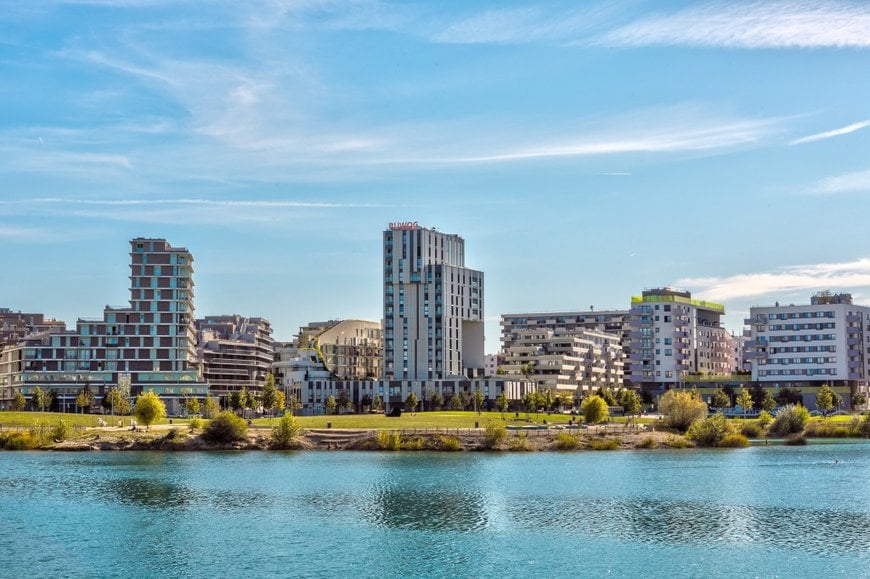www.industry-asia-pacific.com
27
'21
Written on Modified on
HALFWAY POINT OF 2023 RESEARCH PERIOD FOR ASPERN SMART CITY RESEARCH (ASCR)
The European Green Deal is the European Commission’s key project for the transition to a climate-neutral and environmentally friendly economy. “The associated challenges for the economy and society are significant. The key is clearly in the development of our cities and the use of state-of-the-art technologies. In order to cover the constantly rising energy needs, we therefore have to utilize all possible technologies that reduce carbon dioxide,” stressed CEO of Siemens Austria Wolfgang Hesoun, who expressed his gratitude that Siemens and the City of Vienna (Wien Energie, Wiener Netze, Wien 3420, and the Vienna Business Agency) kicked off a research program that is the only one of its kind in Europe, aimed at ushering in the energy future in urban areas, back in 2013.

The basic objective of ASCR is to develop market-oriented, scalable, and economical solutions for the energy future in urban areas and to make the energy system more efficient and more climate-friendly. In the course of the energy research project, complex but crucial energy policy questions from essential areas of the energy system are answered – on an interdisciplinary basis using real data and operational experience from field tests. The research questions are also adapted to current challenges on an ongoing basis.
“In order to develop a climate-neutral, sustainable economy and society, it will take new approaches and – as is now becoming evident – closer and closer cooperation between urban planners, energy providers, grid operators, the housing industry, property developers, and industry. We have found this here in parts of Seestadt Aspern – thanks in no small part to the support of the residents,” added Hesoun. Due to the current relevance of the challenges, this project now has a profile that extends far beyond the borders of Austria. This is also evident based on the interest of the many international delegations that visit the showroom each year and make use of the experts’ know-how.
Focus of the second phase: applying the solution concepts in running system operations
While the first phase of the research project (2013–2018) centered around establishing the necessary research infrastructure as the foundation for the collection of real-time data and the practical testing of solution concepts, the focus of the ongoing second phase (2019–2023) is on applying the solution concepts in the running system operations of the given market participant. In this context, the reduction of the system complexity for the users and the automation of operating processes on the basis of the data collected and operational experience gained play an important role. The aim is to create workable solutions for residents, grid and building operators, and energy suppliers. The basis for this is formed by the seamless communication of buildings with their occupants, the smart grid, and the energy markets via aggregators, energy service providers, and trading platforms as well as the intelligent charging of electric and hybrid vehicles and the analysis of new approaches for providing thermal energy for decentralized heating and cooling.
“For Siemens, the participation in the research company is tied directly to concrete, usable output,” explained Hesoun. This will benefit not only the city of Vienna and its residents but also other communities, urban areas, and interested stakeholders far beyond Austria. “The innovations that were pilot tested under the research company are already being used, for example in Austria in current construction projects being completed by Bundesimmobiliengesellschaft. In addition, the knowledge gained is already being applied in newly developed and enhanced Siemens products and solutions,” Hesoun was pleased to report.
Examples:
- BIM (Building Information Modeling) Viewer: Thanks to building information modeling, building operators are now gaining new insights into their buildings and the installed products.
- Building Energy Management System (BEMS): BEMS allows for seamless energy management between buildings and power grids and can ensure the energy- and cost-optimized operation of entire buildings.
- Desigo CC: Integrated, scalable, and open building management platform for the management of high-performance buildings.
- SICAM A8000: Modular device series for telecontrol and automation applications in all areas of the energy supply with high availability requirements.
- SICAM EGS – Enhanced Grid Sensor: Grid sensors provide transparency regarding capacity utilization in low-voltage infrastructure. They serve as the basis for solutions for the digitalization of the distribution network.
- SICAM ChargeControl: Coordinated charging management for reducing the burden on the lowest grid levels.
- SICAM Microgrid Control: First technological basis for the establishment of energy communities that are beneficial to the grid. SICAM Microgrid Control monitors, controls, and optimizes local energy use.
“Although we have already achieved considerable carbon dioxide reductions thanks to optimally matched generation, storage, and consumer components, we have not yet exhausted the possibilities in terms of our analyses and the identification of innovative solution ideas,” said Hesoun. Under the right conditions (e.g. availability of solar/ground water), urban districts can already be operated in a thermally self-sufficient manner and with a high share of self-generated energy. The more renewable energy is fed into the grid or the more new electrical consumers – such as electric vehicles – are used, the more likely it is that the grid will be overloaded. “In order to prevent this, it’s important to make buildings and grids smarter. The role that state-of-the-art monitoring and analysis tools, intelligent sensor technology, and digital management systems play here is still widely underestimated,” pointed out Hesoun in conclusion.
www.siemens.com
www.siemens.com

